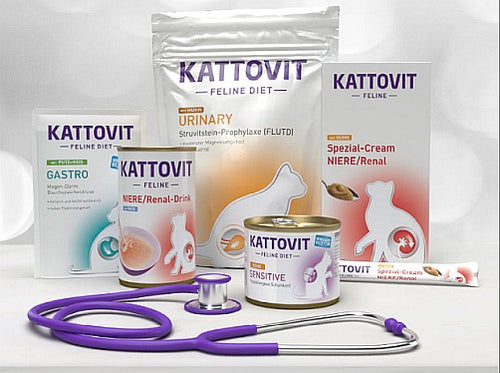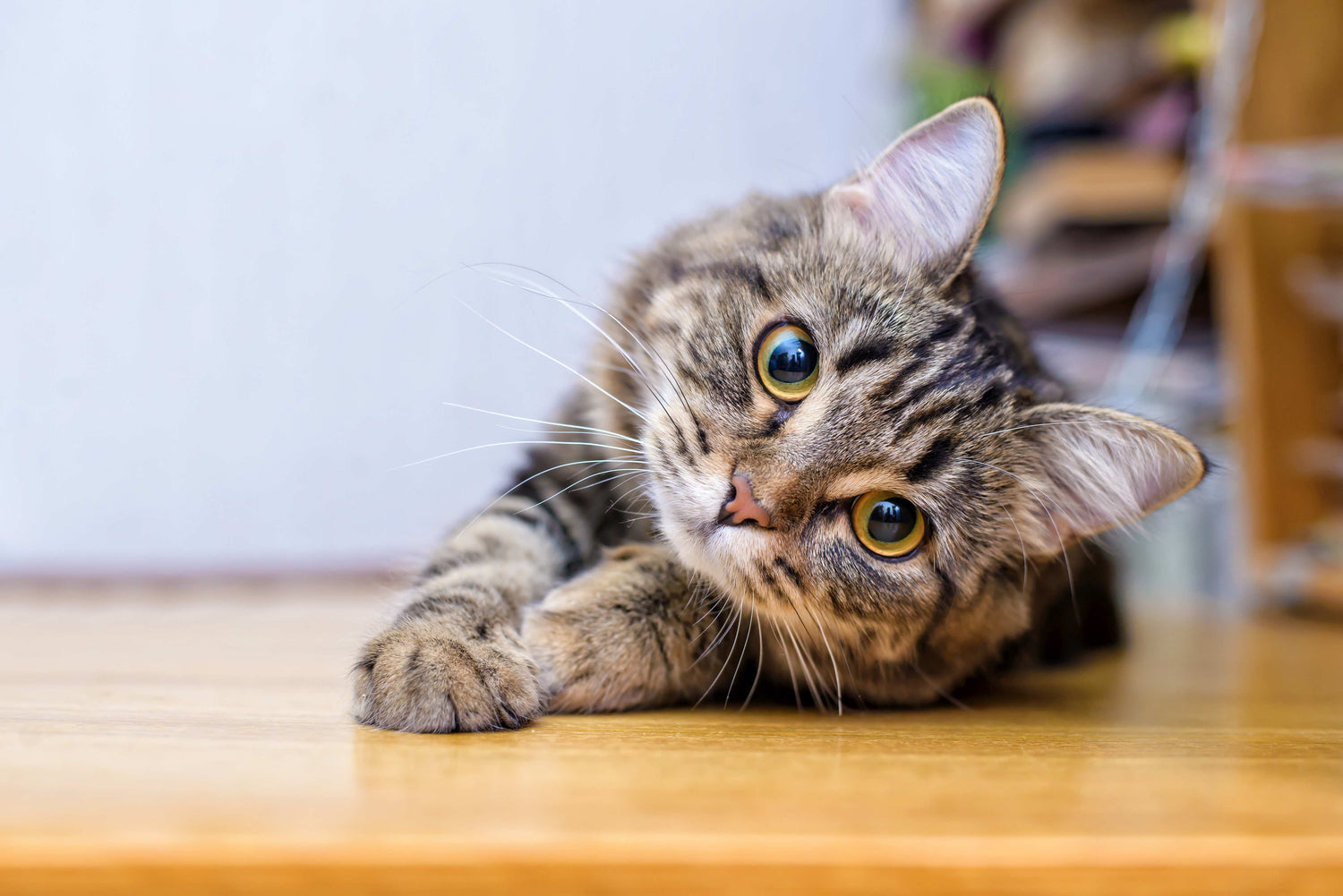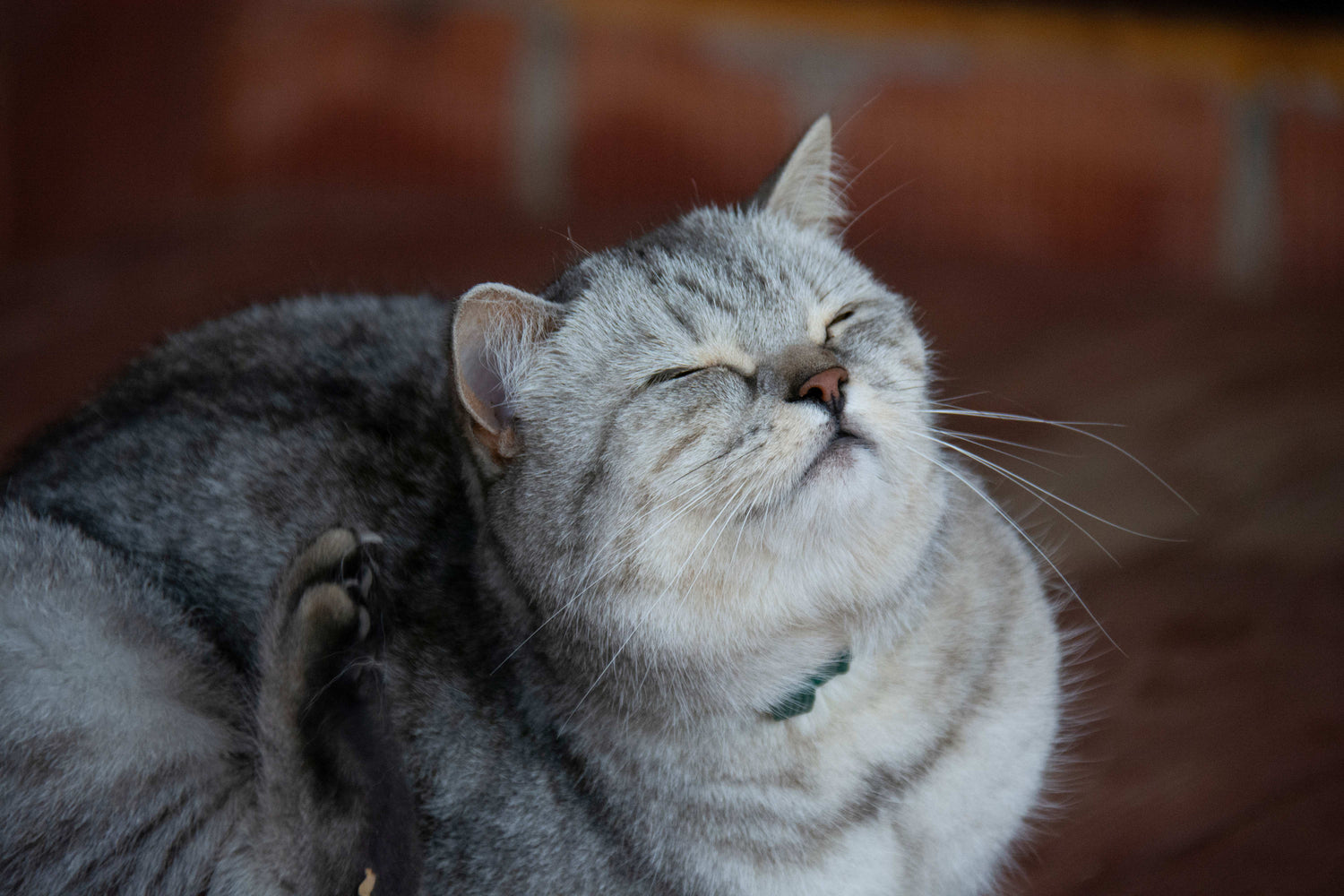Diabetes in cats: How to recognize and treat diabetes
Diabetes mellitus - often called diabetes - can occur in cats, just like in humans, and cause health problems. But what does a diagnosis of diabetes mean for a cat, how do you recognize the disease and what can you do as a cat owner? Find out everything about the causes, symptoms and treatment options for diabetes in cats here.
What is diabetes in cats?
The disease diabetes means a disruption in insulin production in the body of the affected cat. The hormone insulin is responsible for transporting glucose from the blood into the body's cells and is produced in the pancreas. As with humans, there are two types of diabetes in cats: In the rarer type 1 diabetes, the pancreas is diseased or damaged and therefore produces little to no insulin. Type 2 diabetes is the most common in cats and involves increasing insulin resistance . This means that the body's cells become less receptive to insulin. While type 1 diabetes in cats is usually incurable and requires lifelong treatment, type 2 diabetes is favored by external factors such as obesity and old age and can be permanently improved and reduced with early and consistent treatment.
[Diabetes1]
Causes of Diabetes in Cats
There are different causes and risk factors for the occurrence of feline diabetes that promote the disease:
- disease or injury of the pancreas
- castration
- genetics
- Increasing age
- overweight
- lack of exercise
- stress
- carbohydrate-rich diet
A disease or injury to the pancreas is responsible for type 1 diabetes, in which very little or no insulin can be produced by the body.
Researchers have discovered that type 2 diabetes is promoted by genetics and castration : neutered male cats and certain cat breeds such as Maine Coons, Burmese cats and Siamese cats are significantly more likely to develop diabetes. The most important risk factors, however, are obesity and lack of exercise . Cats that are overweight and do not exercise enough do not convert the glucose in their bodies into energy, so their blood sugar levels rise.
Stress is also a risk factor for the development of diabetes, as it increases blood sugar levels. Constantly released stress hormones can also be the result of other undetected diseases such as chronic inflammation or urinary tract infections that are putting strain on the animal.
A diet rich in carbohydrates and poor quality also contributes to permanently elevated blood sugar and disrupts the cat's glucose balance.
Symptoms of Diabetes in Cats
Diabetes in cats often goes undetected for a long time, but sooner or later it manifests itself in a number of symptoms that you as a cat owner should pay attention to:
- Increased thirst
- Increased food intake and cravings
- Increased urination
- fatigue and weakness
- Dull coat
- weight loss
Many of these symptoms are related to one another. Since the glucose is no longer transported to the designated cells via insulin, the cat's blood sugar level increases. As a result, the body tries to expel the glucose via urine. For this reason, the cat urinates more often than usual and loses a lot of fluid, which it tries to compensate for by drinking more . Sometimes the diabetic cat can also become unclean because it does not want to use a dirty litter box several times.
Glucose is needed in the cells to generate energy. However, as it no longer reaches them, affected cats are often tired and exhausted . To compensate for the loss of energy, diabetic cats eat more and sometimes have cravings . This becomes a vicious circle, as the body cannot use the energy supplied through food, blood sugar levels continue to rise and many cats ultimately even lose weight despite increased food intake. However, weight loss is only one possible symptom of diabetes and does not occur in all diabetic cats.
Permanently elevated blood sugar leads in the long term to cell death and damage to blood vessels and nerves in the cat's body. A very common effect is a change in the gait of a diabetic cat. Cats are normally toe walkers and step very carefully using only the front part of their paws. However, due to nerve damage, many cats develop what is known as a plantigrade gait and step on their hocks instead. If you notice such an unusual gait in your cat, you should see a vet immediately, as advanced diabetes may already be present. The same applies to the other symptoms: if left untreated, diabetes has serious consequences and can be life-threatening . Treatment by a vet is therefore absolutely necessary.
If you suspect that your cat is suffering from diabetes, a number of measurements will first be required at the vet. Since the animals are usually stressed at the vet and therefore have increased blood sugar levels, the doctor will ideally measure the long-term blood sugar levels based on the fructosamine value of the cat. Measuring the amount of sugar in the urine can also provide information about the disease.
The successful treatment of feline diabetes consists of two important components: insulin therapy and the Dietary food . Cats with type 1 diabetes need to be given insulin for life, as their bodies no longer produce insulin. Cats with type 2 diabetes also need insulin. However, if their health improves, the cat may one day be able to regulate its own glucose levels.

Insulin administration in cats
The type and amount of insulin to be administered varies from animal to animal and must be adjusted to your cat individually. Regular blood sugar level measurements and a detailed protocol will help you and the vet to get an overview and find the right therapy for your cat. Insulin administration is usually necessary twice a day, which you as the owner must do at home with special syringes or insulin pens . This will probably be a challenge for you and your cat at first. However, with increasing routine and a few tricks, insulin administration and blood sugar measurement will become easier.
A tiny drop of blood is needed to measure blood sugar. The easiest way to do this is to take it from your cat's ear. To do this, rub the ear gently between your fingers beforehand to improve blood flow. Your vet will also show you exactly how to administer insulin to your cat. To prevent your cat from becoming nervous or stressed, you should make the procedure a positive experience and combine it with lots of praise , petting and diabetes-friendly treats . A routine is also important for your house cat. Therefore, give the medicine in the same place and at the same time every time, if possible.
As a rule, you should always give your cat insulin after a meal. If your cat is behaving strangely, is lethargic, is shaking, refuses to eat, or is even vomiting , you should take it to the vet immediately and under no circumstances should you give it insulin. Such symptoms can indicate hypoglycemia , i.e. low blood sugar in your furry friend, which would be made worse by insulin. Even with undetected or untreated diabetes, a cat can eventually develop low blood sugar, suffer from weakness, shaking, disorientation and finally faint. This diabetic coma is usually preceded by hyperacidity of the blood, a condition known as ketoacidosis . Ketoacidosis is an acute emergency and life-threatening for the cat.
Nutrition for diabetic cats
A low-carbohydrate, high-protein diet is generally suitable for cats suffering from diabetes. Dietary food specially developed for diabetic cats covers this need and supports your cat in treating the disease. You should change the diet slowly and in a structured manner to gently get your cat used to the new cat food.
If your diabetic cat is overweight, the vet will prescribe a diet plan to help him lose weight in addition to insulin. You should stick to this plan consistently, because by normalizing his weight, your cat may be able to improve his metabolism and eventually stop needing insulin altogether. If possible, play with your cat a lot and often to increase his exercise , use the glucose that has accumulated in his body and thereby lower his blood sugar level.
If your cat is of normal weight and does not have to follow a strict diet, you should also make sure that there is enough food available at all times. This way, your cat can counteract hypoglycemia on its own, although it should of course not eat too much throughout the day. Regular monitoring of its blood sugar levels is therefore essential.









